During ArtWave 21 I have been asked to participate in the ‘Celebrate Cuckmere’ exhibition at the South Hill Barn, a newish venue in the South Downs National Park on the edge of Seaford, because of the work and essays I have written about the sea defences over the last year. This is the piece which will accompany work showing the various stages of development of a painting. It goes:
Once upon a time a teenager arrived back in the UK after living abroad with his serviceman father. Walking from the aircraft he was amazed by the colour of grass. So was everyone else on the plane judging from how they all avoided the footpath to walk this striking English green to the terminal. After the duns and ochres of Mediterranean landscape the range of greens took the young man aback. From that moment his in love with colour was reignited.
Three years later, his disrupted education spewed him out at the doors of a local art college. The Jesuits boast “Give me the child for the first seven years and I’ll give you the man.” My years in art college did more than give me long hair and a Beatles record collection. It imbued me with a core belief in the beauty of our world, it filled my soul with the joy of art, colour, and the world around me.
Sixty years on I continue to share this pleasure through my painting. Moving to Seaford 8 years ago I delighted first in my garden, continuing the themes I had developed living in Surrey. I explored colour, breaking my observed reality into fragments dislocating colour and line. I made abstract blocks that pushed further my expressive use of paint and pastels and began to develop my photography alongside the sketch book as a source.
I began to draw parallels between what I observed in nature and the work of many artists. Inevitably I began to see the stripes of the metalwork in the sea defences on the Cuckmere and at Seaford’s Splash Point as echoing the stripes (forgive the pun) in Bridget Riley’s work that had been so influential on me in the 1960’s. The closer I looked the more I began to see extraordinary colour in their mix of concrete, rust, and lichens.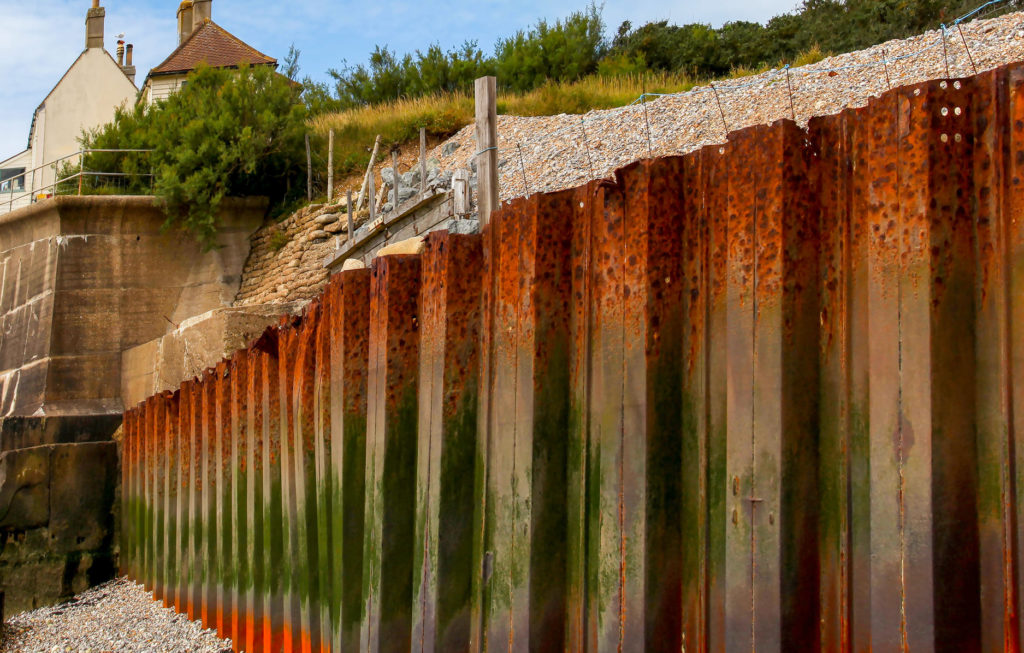
They are different, Splash Point and the Cuckmere defences. Cuckmere is not reinforced with concrete the way Splash Point is, so we see holes and sections destroyed. More detritus in the nets and other rubbish accumulates on the Cuckmere and the destruction caused me to compare the shielding as having all the usefulness of a chocolate teapot – or chocolate fireguard if you prefer.
For the last year my focus has been on rendering my vision of the colours and textures collected in my photography and in pieces of shattered metal I keep in the studio, hoping too it would give publicity to the decay and lack of care for our local coastline. You can see more of the 60+ pieces I have created in my ‘Trust in Rust’ show in Seaford during ArtWave (ArtWave venue no. 83)
Process:
I first started using a camera ‘as a lad’ and sold my first photograph to an American collector when I was 17, back when images were recorded on film and had to be printed out on paper. I still print the images I use on paper, but now as giclée’s at A2 or A3 on art papers. The camera I used has a large sensor which allows me to enormously enlarge images. This enables me to focus in on small sections and blow them up to examine the textures and colour in a way that I can’t do on an electronic screen. Sometimes I will blow images up to four- or five-feet square by collaging several photos together.
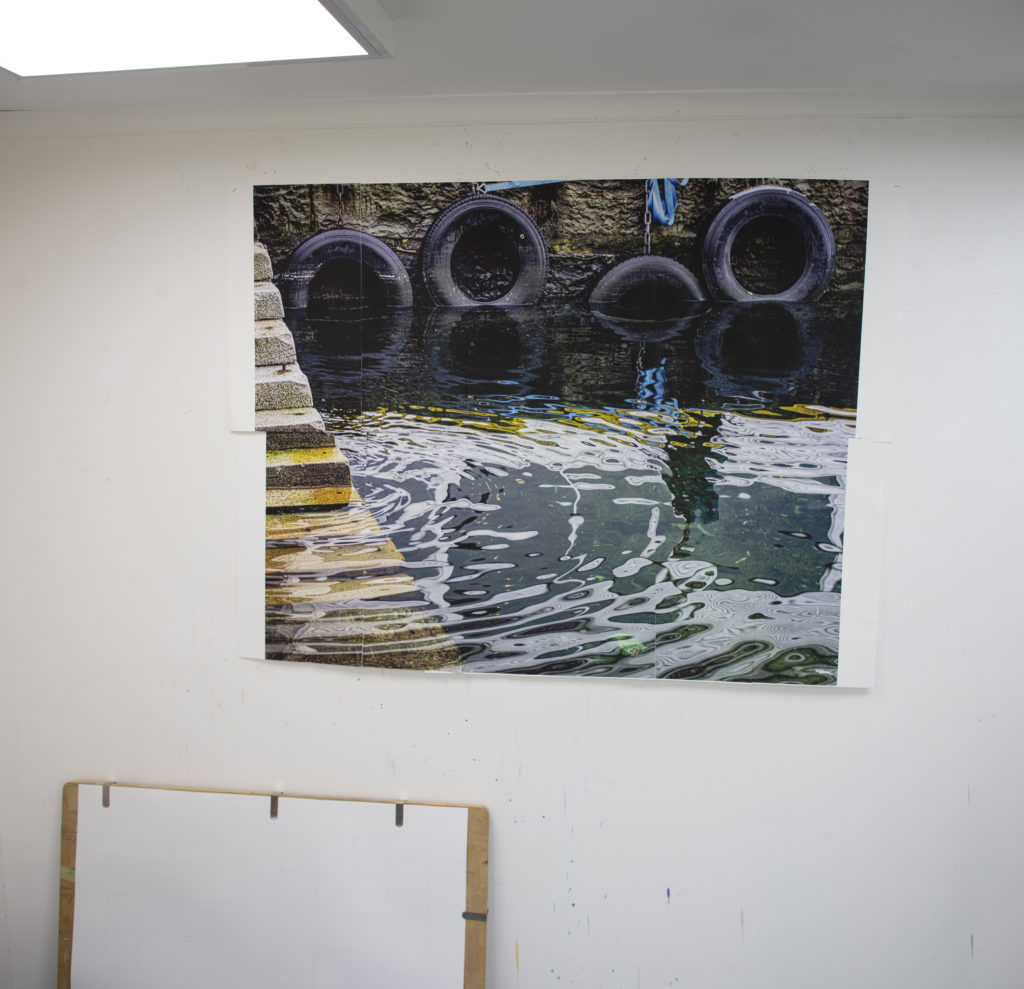
Roughly 4 feet by 3 feet this image will form the basis of paintings to come once I sort out in my mind what I want to extract from it – it became the basis of the ‘Bergen’ canvas, 4×3 feet acrylic on canvas
The digital images rob artworks of much that matters – scale, texture, and true colour. I take the printed images and turn them into paintings. At each step in the process, I edit. I mean by editing that I select. When I (or you for that matter) take a photograph, we are automatically editing – we call it choosing or selecting what it is we are ‘framing’ with the camera. When I print an image I select again, cropping and editing. When I then take the image across into paint I edit again.
The first stage is to look at the scale of the image. Monet’s work embraces you, surrounds you with colour. I would love to work larger but neither have the studio not storage space – if you have visited Monet’s studio in Giverny you will understand. I take the first step working an idea up through painting on paper, editing further introducing texture, examining colour. About one in five of the works on paper make to the next stage where, edited again, reframed, rescaled, they are painted larger on canvas.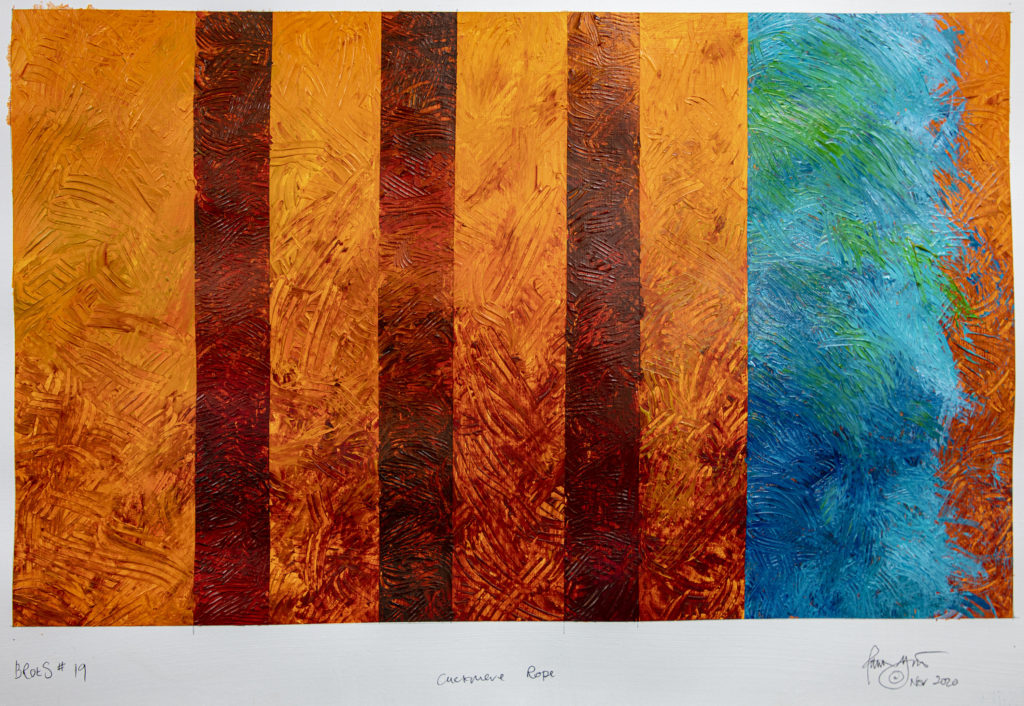
Working on canvas introduces more elements – scale, the texture and thickness of paint, allowing colours to mix on the surface and like Monet, allowing underpainting to break through the top layer in a kind of pointilliste way. I use a variety of tools – sable and hogshair brushes, serrated scrapers. I work with acrylic paints, sometimes working over the top with thinner layers or oil pastels. It is a physically demanding process.
At each stage of the process the image is refined, redefined to produce a painting which often takes the image and abstracts it into more of an emotional response to the scene I have framed. I want to arouse an emotional response in the viewer, to let my audience leave with a sharper eye to see our world, with an experience of beauty that will draw them back to art, much as the faithful return to worship.

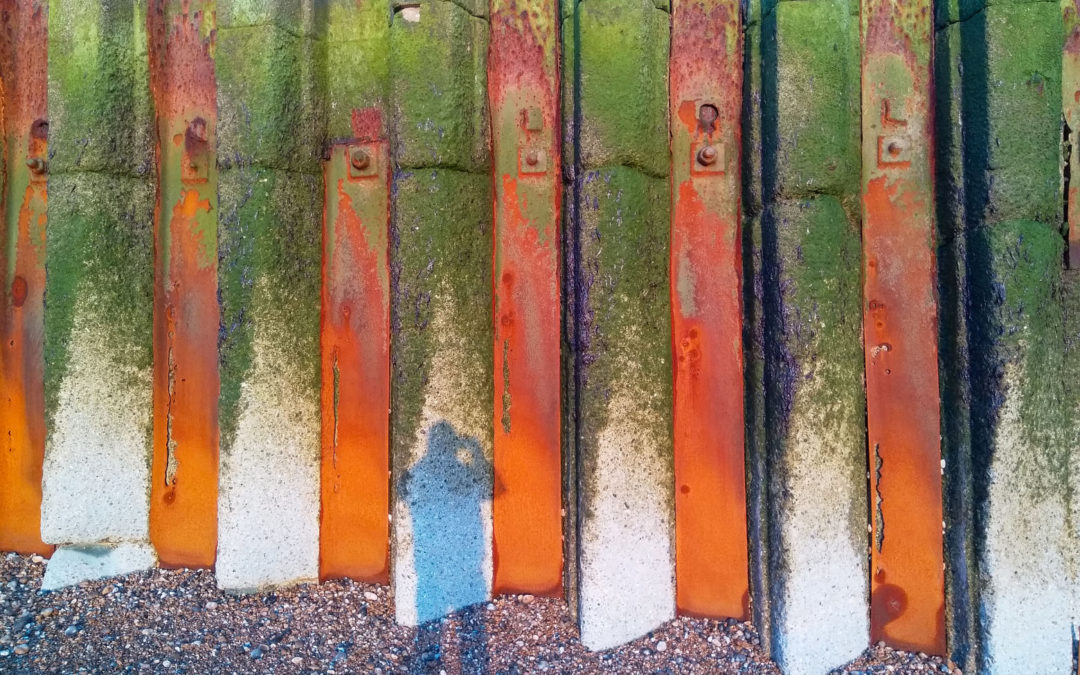


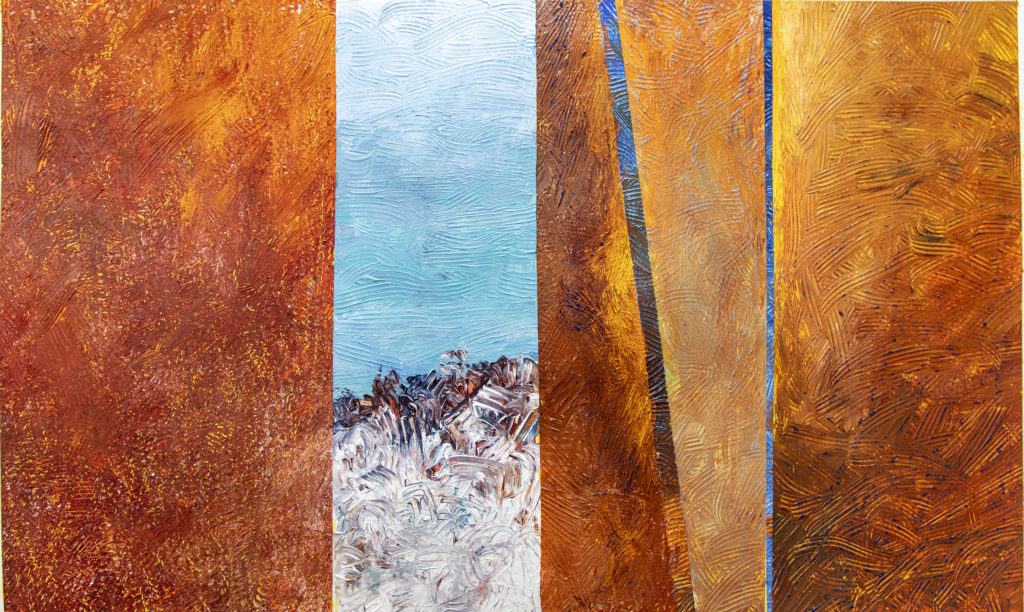
Recent Comments